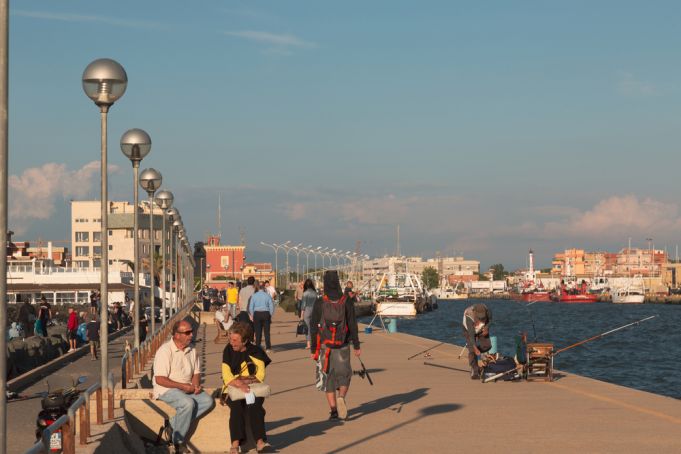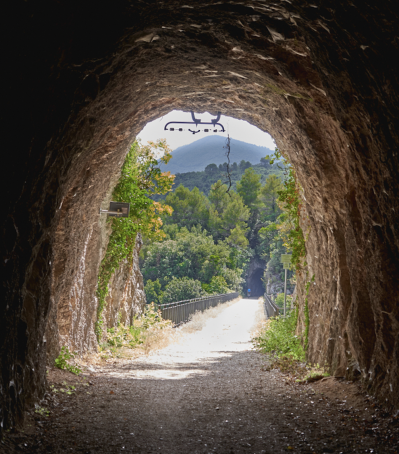Bike trips offer a solution to over toursim in Rome
While the eternal city is preparing for the great event of the Jubilee 2025, the Sabina region of Lazio dedicates their beautiful journey for cyclists, from Assisi to Saint Peter's, to visitors looking for fresh experiences.Millions of tourists travel to the Italian Capital every year to marvel at the monuments and churches spread throughout the chaotic city because, despite its faults, it offers unparalleled beauty.
The number of tourists arriving daily in Rome has accelerated beyond pre - pandemic numbers, so much so that the destination has been saturated to a point of over tourism.Efforts are being made to respond to the demand and diversify the offers for tourists that come to Rome, in order to mitigate the negative effects of over tourism.
The unique and unforgettable heritage of historical, artistic, archaeological, naturalistic and gastronomic excellence that Lazio and neighboring regions proudly present will surely charm tourists from around the world.
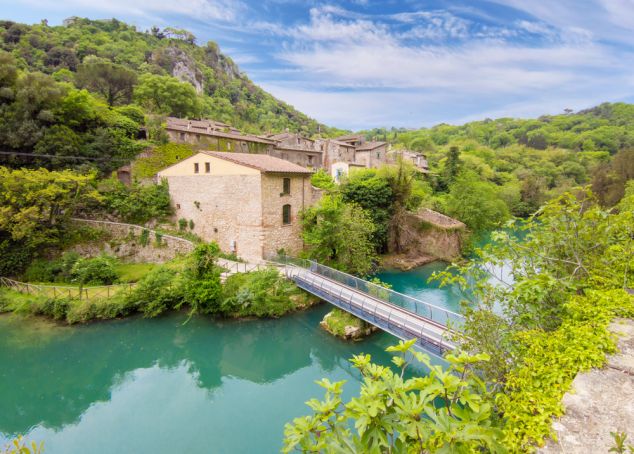
The idea was born from the experience of a cyclist and traveler and embraces both the theme of water and the name of Francis that unites the Pope of Rome and the Saint of Assisi.
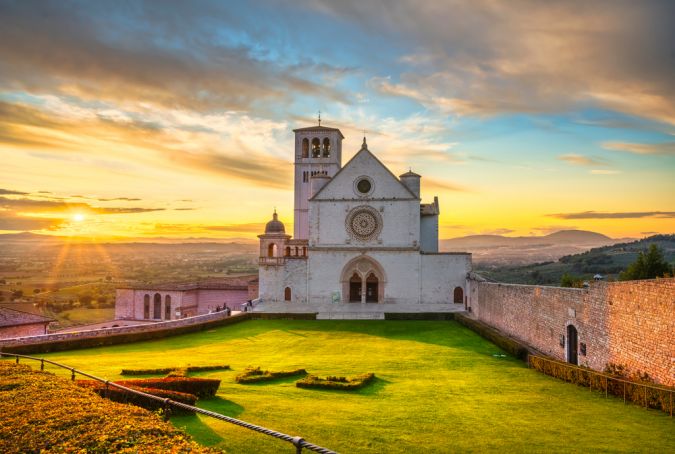
These are the features of the Assisi to Rome Via dell'Acqua:
- 254 Kilometers
- 8 UNESCO sites
- 7 Abbeys
- 3 Archaeological sites
- 4 Sites of Community Interest
- 2 Former historic railways
- 2 Nature oases
- 10 Cities of art
- 8 Rivers and Streams
- The highest waterfall in Europe
- The 2 capitals of Christianity in Italy
- 25 Train stations for intermodal train+bike exchange
From Assisi to Rome (and Fiumicino) by bike along the Via dell'Acqua
(translation of an article by Manlio Pisu and published by Sole24Ore)It is one of the finest bicycle touring routes in central Italy, capable of satisfying even the most discerning palates: from Assisi to Rome by bicycle with the rustle of water in your ear along 250km of paths between Umbria and Lazio that separate the two centers of Christianity.This is the Via dell'Acqua, a route that winds along the course of the Topino, Clitunno, Nera and Tiber rivers.
The combination of ingredients is unique: nature, history, art, landscapes, villages, spirituality, food and wine, adventure and a bit of hard work, but just a pinch.
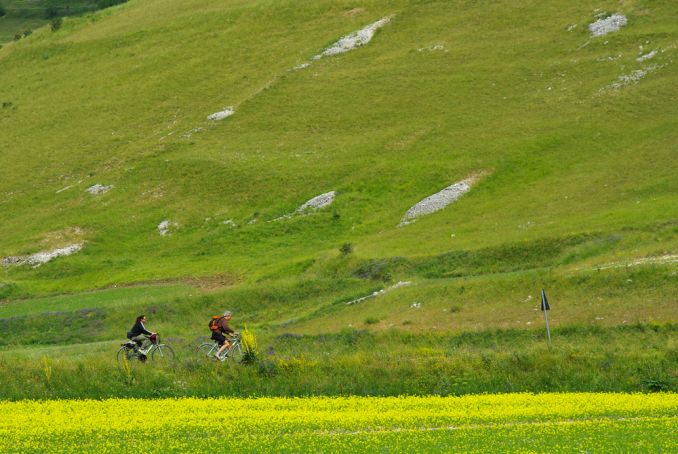
From the Drava to the Nera
The project was created from the bottom up from the initiative of Alessandro Marrone, a lifelong cyclist. In 2013 he was cycling on vacation on the Drava cycle route from Val Pusteria (South Tyrol) to the Danube."Is it possible," he wondered, "that in central Italy nothing similar can be done? From there began a journey that led the "founder" of the Via dell'Acqua (The Waterway) from his hometown of Stimigliano in Sabina to "connect" and "stitch together" eight different cycle routes in Umbria and Lazio, eventually turning them into a single inter-regional route.
The route
Today, the Via dell' Acqua is a mostly complete work, easily navigable even for inexperienced cyclists. While it is suitable for mountain bikes, e-bikes and gravel bikes, it is not recommended for road bikes.There is a small, as yet unfished part: some (short) stretches of bicycle path are missing, from Marmore Falls to Terni and from Fiano Romano to Labaro, on the outskirts of the capital.
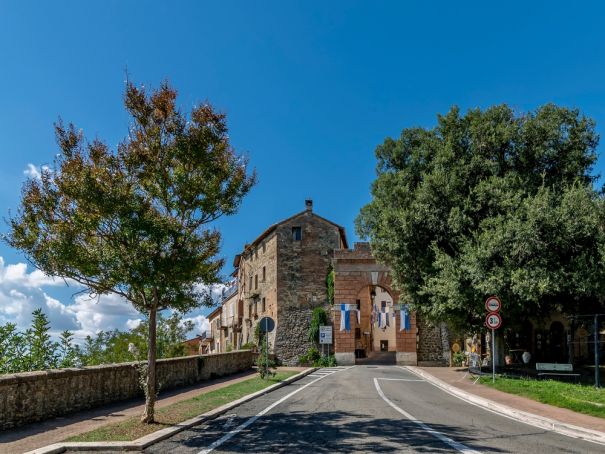
The Umbrian Valley
Assisi's Art Nouveau-style train station can be the starting point for a multi-day cycle tour. But the ride can also be configured as a day or weekend excursion, moving from one of the many stations on the Rome-Perugia line.Just off the train in Assisi, the cyclist finds himself immersed in the spiritual atmosphere that characterizes the town of the Saint.
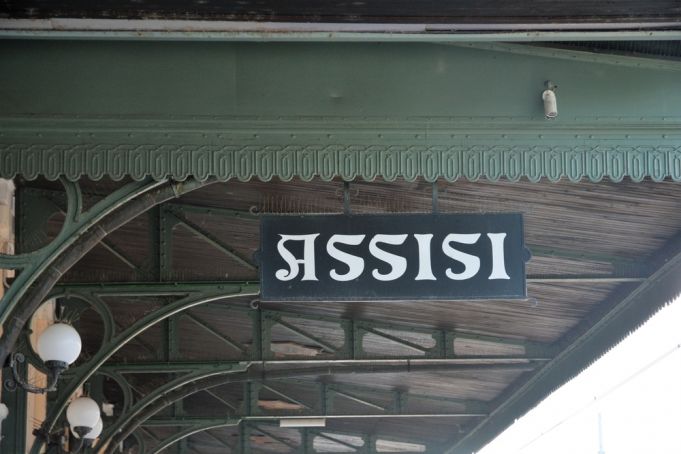
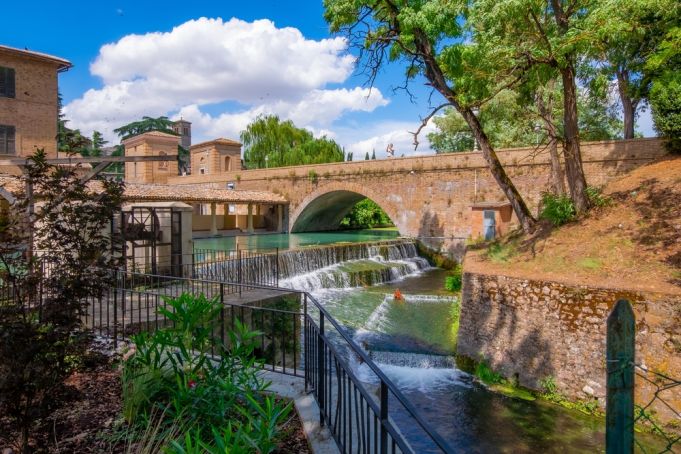
The Spoleto - Norcia Path
From Spoleto begins one of the most evocative and adventurous sections of the Via dell'Acqua. It is the old railway, now decommissioned, from Spoleto to Norcia, active between 1926 and 1968.A masterpiece of railway engineering from the 1920s, the track climbs up a slight incline, drawing several helical loops, to overcome the approximately 300-meter drop to the Caprareccia pass.
The pitch blackness of the tunnels gives the route a hint of adventure. In the tunnels the temperature plummets. A good flashlight is essential.
The Valnerina
From the pitch black of the tunnels we return to the bright green of the Valnerina. The first village that pops up is Sant'Anatolia di Narco on the Nera, a tributary of the Tiber. There you take the Nera Greenway bike path. Along the river, the rustle of the current is music in the ears of the pedestrian. In quick succession are the villages of Scheggino, Ferentillo and Arrone.A short detour takes you up to Umbriano, the abandoned village that gives Umbria its name, and the abbey of San Pietro in Valle, now converted into a small charming hotel.
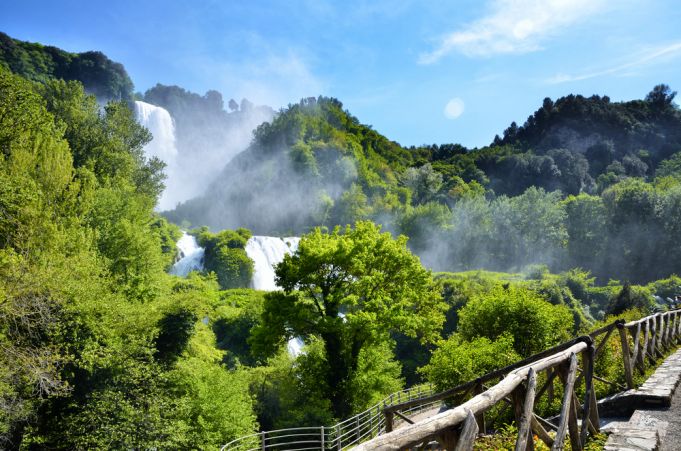
Jean-Baptiste Camille Corot, a mid-nineteenth-century French landscape painter, was so fascinated by it that he depicted the ruins in more than twenty paintings, scattered throughout France.
At Stifone, in the Nera gorges, topped by the abbey of San Cassiano, the river takes on emerald green and cobalt blue colors.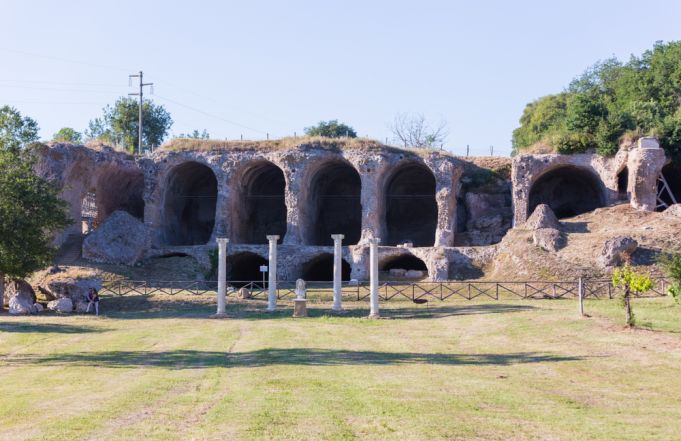
The Tiber Valley
At Orte the Nera flows into the Tiber. Here the landscape opens up. The ride speeds through the Sabina.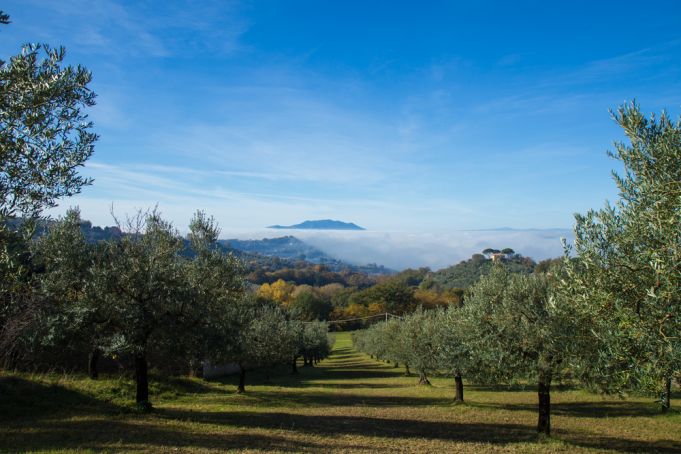
The Tevere- Farfa nature oasis and the archaeological site of Lucus Feroniae are the last attractions before entering the metropolitan area, where at Labaro you take the Castel Giubileo bike path to St. Peter's.
- Vatican Museums open late on Friday and Saturday nights
- In Italy, the Dante Train traces poet’s journey from Florence to Ravenna
The Regina Ciclarum - Finis Terrae
For those who still have strength in their legs, the route can be extended to the mouth of the Tiber at Fiumicino. Just follow the Regina Ciclarum, a new bicycle path that leads from the center of the capital to the Tyrrhenian Sea.